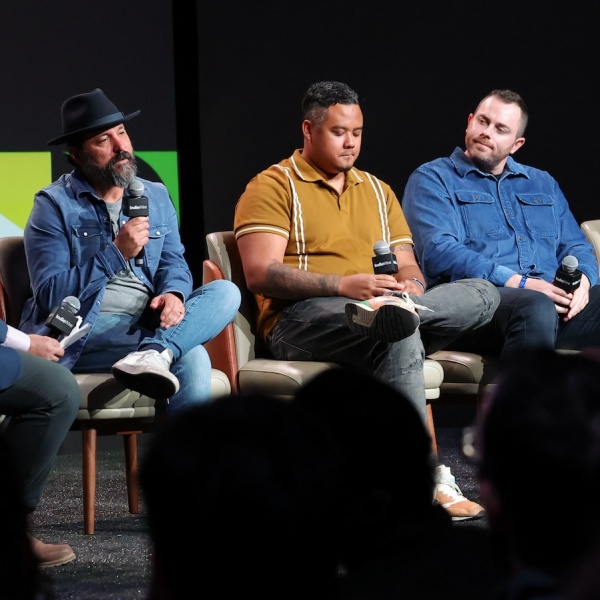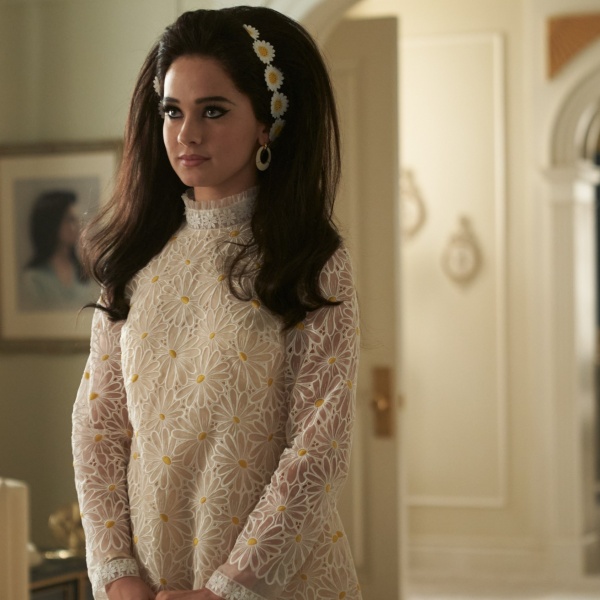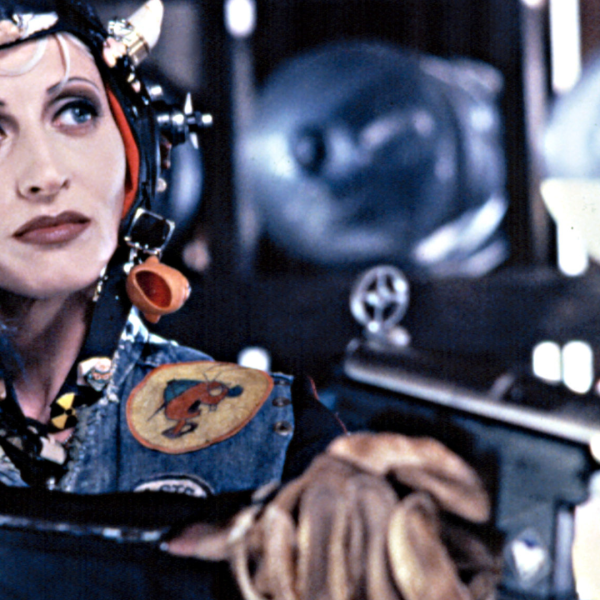What’s the best slasher franchise of all time? That question is certain to start an argument among horror fans. But with all due respect to “Scream,” Wes Craven’s original horror franchise “A Nightmare on Elm Street” has quite possibly the most legitimate claim to the title.
Sure, not every film about wacky child murderer Freddy Krueger (the delightfully menacing Robert Englund) and his mission to kill the teenagers of Springwood in their sleep is an A+ effort. Like many a slasher franchise, the series eventually succumbed to its own ridiculousness as sequel after sequel was steadily pumped out and quality diminished. But the series also has more hits to its credit than most of the other classic slashers. The original “Halloween” is arguably the best slasher of all time, but it’s also the only genuinely great film in the franchise (though there are dozens of “Halloween H20” defenders! Dozens!). “Friday the 13th,” depending on who you ask, has anywhere from three to zero solid entries, and the rest of the films are frankly kind of a mess. The less said about most “Texas Chainsaw Massacre” films, the better.
But “A Nightmare on Elm Street” has at least four great entries that horror fans can look to as genuine classics. And even the subpar entries, with the exception of one or two, still have a bit of juice in them that makes them watchable fun. Part of why the series managed to retain a relatively high level of baseline quality throughout its run is the great premise that Craven laid out in his legendary 1984 original film. Krueger, a child murderer seeking revenge on the parents who killed him by targeting their own kids, can only attack and kill his victims while they sleep. It’s a setup that proves very malleable, opening up the series to interesting possibilities and potential exploration of the lead character’s psyche. Also helping to keep the franchise a consistent, nasty delight is Englund. Unlike many slashers, which substitute the men behind the hockey or face masks from installment to installment, Englund portrayed Freddy in eight of the nine “Elm Street” movies. It gives the films a real character to latch onto, and whether Freddy is at his most menacing or his most jokey, Englund smashes it out of the park every time.
As Halloween approaches, IndieWire went back to Springwood to determine what’s the best, what’s the worst, and what’s the most mediocre film in the entire “Elm Street” mythos. This list includes the six films that make up the film’s original continuity (the 1984 original, “Freddy’s Revenge,” “Dream Warriors,” “Dream Master,” “Dream Child,” and “Freddy’s Dead”), along with Craven’s meta side film “New Nightmare,” crossover “Freddy vs. Jason,” and the false start 2010 reboot film.
Here are all nine of the “Nightmare on Elm Street” films ranked. Read on to find the movie of your wildest dreams.
With editorial contributions by Alison Foreman.
-
9. “Freddy’s Dead: The Final Nightmare” (1991)

Image Credit: ©New Line Cinema/Courtesy Everett Collection What’s Freddy up to? “The Final Nightmare” begins with a strong hook, setting itself in a near future where Freddy has successfully murdered every single child in Springwood, leaving the adult population insane with grief. He’s left one kid alive though, the amnesiac “John Doe” (Shon Greenblatt), and lets him flee the town’s limits in the hopes of using him to bring about his nightmares globally. That intriguing setup gets completely cut short almost immediately afterward when John is brought back to the town to jog his memory, because “The Final Nightmare” never met a good idea it couldn’t ruin.
Who’s the final girl/boy? Like way too many slasher franchises in their early ’90s twilight years (looking at you, “Jason Goes to Hell: The Final Friday”), “Nightmare on Elm Street” tries to add some personal stakes to its climax by introducing a long-lost family member of its central villain. In this case, it’s Maggie (Lisa Zane), a psychologist who works at a center for troubled youth and discovers she’s actually Freddy’s never before mentioned daughter. The revelation of her existence comes with some nonsense about “dream demons” that give Freddy his power, but it’s not the worst set-up for a final girl character. The issue is that Maggie has no character to speak of, coming across more as a plot device needed to finally pull the plug on the lumbering series.
Best kill: One of the film’s main issues is that the kills are far too goofy to take remotely seriously; the most notorious, by far, is the infamous scene where Freddy uses a Nintendo Power Glove to control and torment gamer Spencer (Breckin Meyer). For a kill that manages to genuinely get the pulse racing instead of making eyes roll, Freddy replacing deaf Carlos’ (Ricky Dean Logan) hearing aids with hyper-sensitive ones that explode his head at the sound of nails on a chalkboard sticks out as a particularly sad and gruesome way to go out.
Final verdict: The best thing about “Freddy’s Dead” is it actually lived up to its name as the final mainline “Nightmare on Elm Street” movie, something certain films (again, looking at you, “Jason Goes to Hell: The Final Friday”) can’t say. The series returned for a crossover, a remake, and an experimental take, but this was truly the end of Freddy as we knew him. Still, when a movie’s redeeming factor is that you don’t have to sit through new films after it, you know there’s a problem. “Freddy’s Dead” is a dispiriting mess of a finale, mixing bad 3D, poorly drawn characters, terrible jokes, incoherent new mythology, and bizarre cameos from Tom Arnold and Roseanne Barr to create a movie that’s more comedy than horror, which might work if it was actually, you know, funny (director Rachel Talalay would find a better vehicle for her weird muse in the criminally underrated “Tank Girl”). If Freddy literally jumped the shark in “The Final Nightmare,” that wouldn’t be as ridiculous as half the scenes that made the final cut. Still, that Goo Goo Dolls song kind of slaps. —WC
-
8. “A Nightmare on Elm Street” (2010)

Image Credit: ©Warner Bros/Courtesy Everett Collection What’s Freddy up to? The same thing he did in the first film, just in a fresh coat of paint. For the 2010 remake of Wes Craven’s original, Platinum Dunes infamously did not consult the horror vet, instead entrusting the project to music video director Samuel Bayer, who gives it a glossy, slick, and forgettable look. Rather than bringing back Englund, Freddy is now played by Jackie Earle Haley, caked in CGI and makeup that more closely resembles a real burn victim. Give him credit where it’s due: Haley is a wonderful Freddy, managing to create a more serious and malevolent take on the character that nonetheless feels true and respectful to Englund’s legacy.
Who’s the final girl/boy? Nancy from the first movie, of course, here played by Rooney Mara. A genuinely great actor like Mara — who would break through later that year with her iconic one-scene role in “The Social Network” — in a final girl role sounds like a dream come true for horror fans. But Mara notoriously hated starring in the film, and it really shows in her dull, wishy-washy performance.
Best kill: None of the characters in the film are memorable enough to particularly care about when they die, and “A Nightmare on Elm Street” 2.0’s kills also suffer from being a bit generic in general. But the movie kicks off with a good one, as a harmless nap at a diner for Dean (Kellan Lutz) turns into a horror when Freddy’s slash of his throat in the dream world manifests as him slashing his own throat in the real eatery.
Final verdict: Haley aside, there’s nothing here to recommend. The 2010 “Nightmare on Elm Street” follows the original far too closely to chart a new and exciting niche for itself, and almost every single alteration it does bother to make is a significant downgrade. All 95 minutes it takes to watch this thing can be better spent with the 1984 original. —WC
-
7. “Freddy vs. Jason” (2003)

Image Credit: ©New Line Cinema/Courtesy Everett Collection What’s Freddy up to? In “Bride of Chucky” director Ronny Yu’s crossover between the two iconic ’80s slasher villains, Freddy starts the movie at his most powerless. After the adults of Springwood have successfully managed to make their kids forget about the child killer, he’s been stuck in hell unable to make it into people’s dreams. Looking for a way out, he finds “Friday the 13th” villain Jason Voorhees in hell and uses his power to resurrect him as his puppet. But Jason has a mind of his own and the two soon form a rivalry over who can spread the most horror across the world. Spoiler alert: it’s Jason.
Who’s the final girl/boy? “Freddy vs. Jason” has maybe the single worst group of cannon fodder in the history of both of its franchises, with highlights from the teen cast including Jason Ritter’s wooden performance and Kelly Rowland calling Freddy the F-slur. Aside from Ritter’s Will, the final girl is Monica Keena’s Lori, a bit of a blah ingenue type. That said, she does manage to get some more agency in the climax, where she beheads Freddy and successfully puts the monster to rest. Overall, a decent showing, though definitely not even a top five final girl for the franchise.
Best kill: “Freddy vs. Jason” is somewhat infamous among “Nightmare on Elm Street” fans for the fact that Freddy gets a whopping one kill during its entire runtime (Jason gets many more). So by default, it’s his slaying of Mark (Brendan Fletcher), where the film seemingly throws out every single idea they had for a Freddy kill into one. In quick succession, Freddy: burns a message into Mark’s flesh, conjures visions of his dead brother to torment him, freaks him out with snakes, slashes him across the face, and sets him on fire.
Final verdict: As a “Friday the 13th” film, “Freddy vs. Jason” is pretty good. It explores Jason’s past trauma effectively, gives him some gnarly and effective kills, and turns him into the underdog hero of the movie in a way that somehow makes sense. But as a “Nightmare on Elm Street” movie, “Freddy vs. Jason” is decidedly subpar, with a lack of truly memorable moments for Freddy. He’s essentially the big bad set up for Jason to fight in the climax, and the movie very much revolves around his foe instead of the equal split that the title promises. The movie is still definitely worth seeing for Englund’s final turn in the role, but it isn’t quite the Nightmare it could be. —WC
-
6. “A Nightmare on Elm Street 5: The Dream Child” (1989)

Image Credit: ©New Line Cinema/Courtesy Everett Collection What’s Freddy up to? He’s a…demon baby? In “Dream Child,” we’re reunited with “Dream Master” final girl Alice Johnson (Lisa Wilcox). She’s graduating high school and ready to move on from Springwood. But not before Krueger can rear his ugly head and suddenly start attacking victims in broad daylight amid a backstory-palooza that marks the beginning of a spectacular rough patch for the series.
Who’s the final girl/boy? Alice’s return is memorable if only because she plays the unusual role of pregnant final girl in a plot-relevant twist that sort of works… but is mostly stupid. She’s joined by Freddy’s mom, Amanda Krueger (Beatrice Boepple), who isn’t exactly a stand-in for horror’s most famous character trope but is ultimately the bottom line for women who have to cope with the slasher villain’s nauseating antics.
Best kill: With only three kills to its name, “Dream Child” can add bloodlessness to its list of myriad flaws. That said, the brutally on-the-nose death of model Greta Gibson (Erika Anderson) takes the cake as the movie’s best. The girl is literally force-fed her own flesh and blood while her shitty mom watches. Then, appearing as the worst kind of left over, she gets to jump-scare Alice from inside a refrigerator while looking like a swollen tick.
Final verdict: There’s so much about this movie that is outright annoying, from fan-service Freddy on a skateboard to repeat use of a jarring green screen effect that completely misses the mark on stitching together reality and the dream world. What’s worse, it’s topped off with a buffet of Krueger origin story details we just don’t need and contemporary consequences that just don’t make sense. That said, “Dream Child” is canon and it’s certainly better than “The Final Nightmare” or that godforsaken remake. —AF
-
5. “A Nightmare on Elm Street 4: The Dream Master” (1988)

Image Credit: ©New Line Cinema/Courtesy Everett Collection What’s Freddy up to? The surviving characters from “Dream Warriors” are back. Combining forces with some new faces (including a new actress for Kristen, played here by Tuesday Knight), the stars of the second sequel re-team to face Freddy in an almost nonsensical follow-up that sees the Westin Hills patients returned to their regular lives and Krueger back on his bullshit. In a real “Harry Potter and the Order of the Phoenix” situation, Kristen is stuck trying to convince her friends that Freddy is once again at large and that they’re in danger before it’s too late.
Who’s the final girl/boy? Spoiler alert: Like Nancy before her, Kristen bites the big one in her second sequel appearance. She’s soon replaced by her boyfriend’s sister Alice, who magically absorbs the traits of her dead friends as Freddy picks them off one by one. Luckily, she knows a nursery rhyme that will put the quippy killer of children in his place. (“Now I lay me down to sleep. The master of dreams, my soul I’ll keep. In the reflection of my mind’s eye, evil will see itself and it shall die.” Just for reference.)
Best kill: The death scenes in “Dream Master” low-key rock, with one dude trapped inside his own waterbed (“How’s this for a wet dream?”) and an asthmatic girl deflated like an old balloon in the middle of class. But the best kill goes to poor, poor Debbie (Brooke Theiss): a student athlete who has her forearms snapped like jerky before getting her face peeled off in a cockroach transformation scene that ends with her getting literally crushed like a bug.
Final verdict: Smack-dab in the middle of our “Elm Street” ranking is exactly where “Dream Master” should be. The plot isn’t as compelling as you’d want it to be, with a paint-by-numbers approach taken to its victims that comes across as more formulaic than freaky. But director Renny Harlin makes up for the lacking suspense with imaginative kills played to their most enjoyably extreme — goofy yet grim. —AF
-
4. “A Nightmare on Elm Street 3: Dream Warriors” (1987)

Image Credit: ©New Line Cinema/Courtesy Everett Collection What’s Freddy up to? After two cases where he haunted kids’ dreams to send them to their early graves, Freddy is still kicking around Springfield as a dream demon. Remarkably, the adults have decided the kids who have seen Freddy are just having your average, ordinary mass psychosis, and a couple of them get sent to a local psychiatric hospital for treatment, giving Freddy a perfect stomping ground for slaughter.
Who’s the final girl/boy? Well, the first film’s original final girl Nancy (Heather Langenkamp) is here and more badass than ever, taking on a mentorship role as an intern therapist at the hospital who trains the kids on how to combat Freddy in their minds. Dispiritingly, Nancy doesn’t make it to the end, but still gets one last moment of fight. The actual final girl this time around is Kristen, one of the kids at the hospital and Nancy’s number two. She’s fun and feisty, and is played by a young and great Patricia Arquette.
Best kill: “Dream Warriors” was the film where Freddy’s kills became more elaborate, and often more comical than the simple slayings of the original film. But the movie’s kills are far superior to the majority seen in its sequels, with tons of imaginative, creative ways of offing the tortured kids, often tailored to their own specific insecurities. Easily the most disturbing is how he kills Phillip (Bradley Gregg), a sleepwalker with a fondness for puppets. Freddy turns the poor kid into a puppet by tearing his tendons from his body and drags him to a tower, where he’s tossed to his death.
Final verdict: “Dream Warriors” establishes a lot of trends that would marr the other films in the “Nightmare on Elm Street” franchise considerably: an uptick in comedy from Freddy, elaborate murders that rely on special effects, and additional mythology to what was once a simple and mysterious premise. But Chuck Russell’s film manages to strike the perfect balance between humor and scares, and keeps all of these elements in moderation, to make one of the most purely satisfying and enjoyable films in the franchise. —WC
-
3. “A Nightmare on Elm Street 2: Freddy’s Revenge” (1985)

Image Credit: ©New Line Cinema/Courtesy Everett Collection What’s Freddy up to? He’s up to some gay stuff. The second “Nightmare on Elm Street,” pumped out quickly to release a year after the original’s success, is now almost universally remembered as “the gay one.” The film’s queer subtext, in which Freddy and his attempts to control the body of unwitting victim Jesse (Mark Patton) acts as a stand-in for gay desire, was unintentional on the part of director Jack Sholder. But screenwriter David Chaskin has said it was intentional, and the gay Patton was also very aware of the story’s hidden themes. The result is a semi-accidental queer masterpiece, using the franchise’s premise of nightmares and hidden fears to explore how homophobia breeds an internal monster.
Who’s the final girl/boy? Aside from Jesse as a male scream queen, the other survivor in the film is his neighbor and friend Lisa (Kim Myers, a total Meryl Streep lookalike). She’s smart and fun and Myers plays her well, although Jesse’s supposed crush on her comes across more like confused repression than anything else.
Best kill: Poor, poor Grady (Robert Rusler). His frenemy relationship with Jesse is adorable, and it’s fairly clear that there are some sparks there. But when Grady lets Jesse stay in his room after a freakout, he ends up locked in there with Freddy after he possesses his friend’s body. It’s a simple, horrifying scene, and Grady’s cries for his father as he’s approached by the killer help drive home how young the cast of these films really are — even if they’re all played by 20-year-olds.
Final verdict: “Freddy’s Revenge” was long panned by purists of the series for breaking some of the original’s established rules, and its queer subtext was often used to mock it rather than praise it. But if you can appreciate the film on its own terms, you’ll find one of the most thought-provoking horror films of the ’80s: a movie that tackles repression, self-loathing, and internalized hatred through stereotypical slasher tropes. Its sillier scenes belie a film that has real rawness and intensity, and it remains a must-watch for any queer horror fan. —WC
-
2. “Wes Craven’s New Nightmare” (1994)

Image Credit: ©New Line Cinema/Courtesy Everett Collection What’s Freddy up to? At the beginning of “New Nightmare?” He’s busy being fictional. A completely separate entry from the franchise, “New Nightmare” throws out the series’ increasingly convoluted mythology in favor of a meta predecessor to Craven’s own “Scream.” In the film, all of Freddy’s adventures in previous films are indeed just fiction, but unbeknown to all but Craven (appearing in a cameo as himself) an evil demonic entity was trapped in the franchise. Since it’s been a few years since “The Final Nightmare” concluded the series, the Entity (played by Englund, here more cold-blooded and vicious than Freddy ever was) has emerged from the films and is now haunting the people involved in their creation.
Who’s the final girl/boy? Heather Langenkamp plays herself here, as a happily married mom whose life turns into a nightmare when her husband is killed by the Entity, and her son Dylan (Miko Hughes) gets tormented by several encounters with the killer. Langenkamp is one of several stars from the original back for “New Nightmare;” her dad from the original John Paxon makes an appearance, and Englund even plays himself, with his jovial performance helping to showcase just how different he is from his most famous role.
Best kill: “New Nightmare” doesn’t have a ton of kills, instead focusing more on suspense than outright violence or gore. Its most memorable death happens when the Entity playfully pays homage to the original film and the very first kill, dispatching babysitter Julie (Tracy Middendorf) in the same fashion that Tina met her end in the original.
Final verdict: There are a lot of reasons why “New Nightmare” is one of the absolute best films in the entire series: the meta twist, the great performance from Langenkamp, and the exploration of how fictional horror can haunt our real lives. But mainly, it’s one of the best because of Wes. Craven’s second time solo directing, the writer/director’s smart screenplay and slick direction show why the series was always at its best when its creator was behind the wheel. —WC
-
1. “A Nightmare on Elm Street” (1984)

Image Credit: ©New Line Cinema/Courtesy Everett Collection What’s Freddy up to? Making a name for himself in Wes Craven’s unforgettable first “Elm Street” outing. Robert Englund delivers some of Freddy’s most menacing scenes in the slasher icon’s debut performance from 1980, which introduced the mean-spirited spirit opposite one of horror’s strongest final girls in the interminably exhausted town of Springwood.
Who’s the final girl/boy? None other than the late, great, perpetually awake Nancy Thompson. After her best friend Tina (Amanda Wyss) is unceremoniously filleted and flung around her bedroom, Nancy is forced to contend with a haunting by Krueger that culminates in not only some of Freddy’s most chilling killings, but also a handful of the series’ most memorable moments. From Nancy commanding her bonehead boyfriend Glen (Johnny Depp) to “whatever you do… don’t fall asleep!” to a surprisingly spooky phone-facilitated French kiss, “A Nightmare on Elm Street” is the Nancy-Freddy two-hander any future installment would have to outdo.
Best kill: Cliche but true, Glen’s blood bed death will never not hit. In a kill scene punctuated with Nancy’s helpless cries — and featuring an unparalleled crop top — Glen foolishly ignores his girlfriend (strike one), falls asleep (strike two), and puts up next to no fight (that’s three, you’re outta here!) before getting sucked into his mattress and regurgitated as a forceful geyser of blood. Fun fact: That scene was infamously disastrous to shoot with 500 gallons of fake blood threatening the electrical equipment of the sound stage.
Final verdict: As a matter of cleverness, you could almost certainly put “Wes Craven’s New Nightmare” at number one on your “Elm Street” ranking. But to appreciate a single film in Freddy’s filmography, most of all its meta-reimagining, you have to go back to the original. Even with that completely lame car scene and the worst dummy imaginable standing in for Ronee Blakley at the end, you can’t beat Freddy’s first at-bat. —AF






